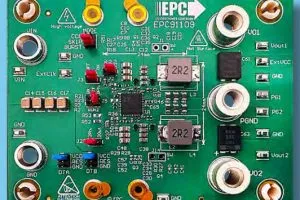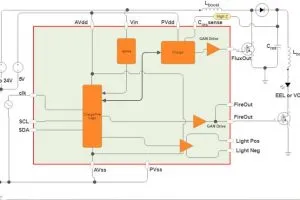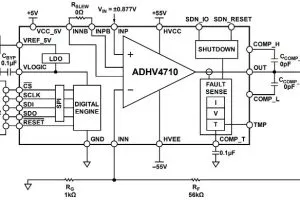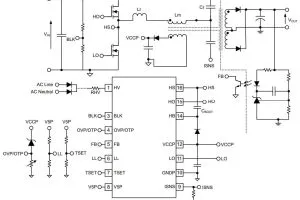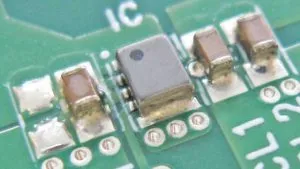
Called XCL108 and drawing 400nA quiescent current, it is a boost converter that will operate from inputs between 650mV and 5.5V – starting from anything above 1.6V.
The device is a series, available with fixed outputs between 3 and 5.5V in 100mV increments.
Maximum output current varies, and is for example 180mA at 5V with 3.3V on the input, or 170mA at 3.3V from 1.8V.
“By adopting PWM-PFM control, high efficiency is always achieved in any current range, from the sleep state of the microcontroller [load] to active states such as communication and sensing,” according to the company. “This eliminates the need for [external] on-off control, even when the boost operation is always running.”
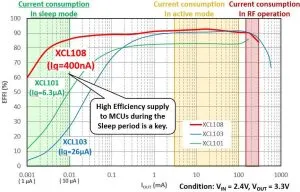
Efficiency examples are 85.9% delivering 10μA (2.4Vin, 3.3Vout), then 90.6% with the load increased to 100mA.
The device comes in 2.5 x 2 x 1mm leg-less package, which is paired in a data sheet design example with three or four 1.6 x 0.8 x 0.8mm 10μF 16V capacitors (Murata GRM188R61C106MA73): two in the output and one on the input for devices delivering 3.3V or below (the 7.7 x 3.1mm example – see photo), or two on the input when delivering above 3.3V.
“We recommend GRM188R61C106MA73 in the datasheet for the XCL108 series because it is commonly used and cost-effective,” the company told Electronics Weekly. “If the capacitor size is increased to 0805 or 2012, a single load capacitor may be sufficient.”
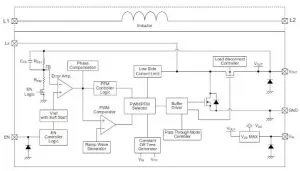
Aside from PFM (pulse frequency modulation) and 1.2MHz PWM (pulse width modulation) generation, inside are a p-channel synchronous rectification mosfet on the high side and an n-channel driver mosfet on the low side. Active control of the p-mosfet parasitic diode prevents current from flowing back through the device.
Operation is over -40 to +105°C, and with up to 2A through the integrated inductor providing its dissipation does not push internal junctions above +125°C.
“Our XCL108 series does not have a specific function to prevent the junction temperature from exceeding 125°C. In practice, the junction temperature may exceed 125°C depending on the conditions,” said Torex.
Find the XCL108 series on this Torex product page, and the data sheet here
